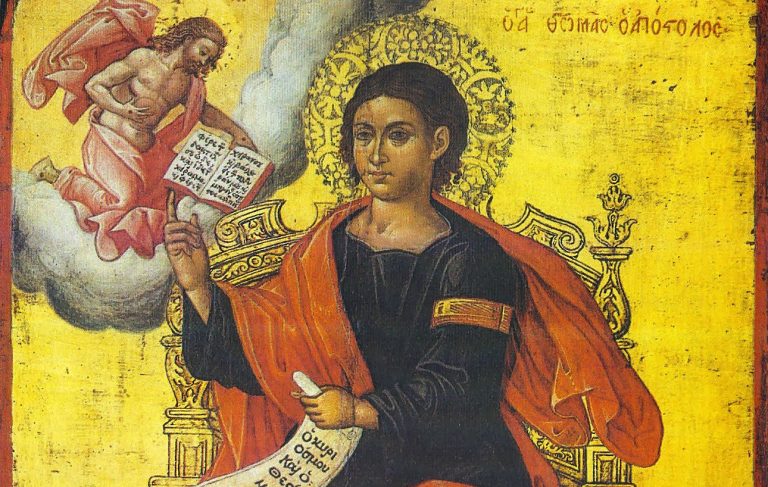St Thomas

St Thomas the Apostle
St. Thomas was born a Jew and was called to be one of the twelve Apostles. His birth and death dates are unknown, but his feast day is celebrated July 3. He lived before the formal establishment of the Catholic Church but is recognized as the patron saint of architects.
He was a dedicated but impetuous follower of Christ. When Jesus said He was returning to Judea to visit His sick friend Lazarus, Thomas immediately exhorted the other Apostles to accompany Him on the trip which involved certain danger and possible death because of the mounting hostility of the authorities.
At the Last Supper, when Christ told His disciples that He was going to prepare a place for them to which they also might come because they knew both the place and the way, Thomas pleaded that they did not understand and received the beautiful assurance that Christ is the Way, the Truth, and the Life.
St. Thomas is best known for his role in verifying the Resurrection of his Master. Thomas’ unwillingness to believe that the other Apostles had seen their risen Lord on the first Easter Sunday earned him the title of “doubting Thomas.”
Eight days later, on Christ’s second apparition, Thomas was gently rebuked for his skepticism and furnished with the evidence he had demanded – seeing in Christ’s hands the point of the nails. Thomas even put his fingers in the nail holes and his hand into Christ’s side. After verifying the wounds were true, St. Thomas became convinced of the reality of the Resurrection and exclaimed, “My Lord and My God,” thus making a public Profession of Faith in the Divinity of Jesus.
St. Thomas is also mentioned as being present at another Resurrection appearance of Jesus – at Lake Tiberias, when a miraculous catch of fish occurred.
This is all that we know about St. Thomas from the New Testament. Tradition says that at the dispersal of the Apostles after Pentecost this saint was sent to evangelize to the Parthians, Medes, and Persians. He ultimately reached India, carrying the Faith to the Malabar coast, which still boasts a large native population calling themselves “Christians of St. Thomas.”
According to tradition, Thomas was killed in an accident when a fowler shot at a peacock and struck Thomas instead. Following his death, some of his relics were taken to Edessa while the rest were kept in what is now known as India. They can still be found within the San Thome Basilica in Chennai, Mylapore, India.
The relics taken to Edessa were moved in 1258 to Italy, where they can be found in the Cathedral of St. Thomas the Apostle in Ortona, Italy. However, it is believed that Saint Thomas’ skull rests in the Monastery of Saint John the Theologian on the Greek Island Patmos.
In art, Saint Thomas is commonly depicted as a young man holding a scroll, or as a young adult touching the resurrected Christ’s wounds.
Saint Thomas was mentioned in several texts, including one document called The Passing of Mary, which claims then-apostle Thomas was the only one to witness the Assumption of Mary into heaven, while the other apostles were transported to Jerusalem to witness her death.
While the other apostles were with Mary, Thomas was left in India until after her first burial, when he was transported to her tomb and he saw her bodily assumption into heaven, when her girdle was left behind.
In versions of the story, the other apostles doubted Thomas’ words until Mary’s tomb was discovered to be empty with the exception of her girdle. Thomas and the girdle were often depicted in medieval and early Renaissance art.
